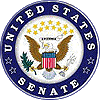 |
|
|
Testimony of Dr. Stephen Prescott on behalf of The Huntsman Cancer Institute, Salt Lake City Utah May 22, 2002 Mr. Chairman, Members of the Committee, and Guests: My name is Stephen Prescott. I am the Executive Director of the Huntsman Cancer Institute in Salt Lake City, Utah. I am a physician and a medical scientist and it is in these roles that I appear today. At the Huntsman Cancer Institute we conduct research into the causes of cancer, we work to prevent cancer, and we treat cancer patients. Most of the patients we serve are from Utah, or Nevada, or our other neighboring states. Every day we see patients who come from families who have borne the burden of environmental exposure to radiation Ė exposure that resulted from federal policy. This began in the 1950s with the atmospheric testing of nuclear devices at the Nevada Test Site Ė the location now proposed for storage of spent nuclear fuel and high level radioactive waste. Citizens of Nevada were exposed to this fallout and, because of the typical weather patterns, individuals in Utah, Arizona, and New Mexico were as well. One of our cancer patients recently told me a horrifying story; as children in Southern Utah he and his brothers would take a Geiger counter out into the pasture on their farm to find the areas that gave the loudest response. Why did their parents allow behavior that now appalls us? Not because of disinterest in the well-being of their children, but because they had been reassured that there was no danger. As illustrated by the experience of the Downwinders, the residents of the intermountain west already have been asked to stand in harmís way, with respect to nuclear exposure, more than other citizens of the United States. And yet, there is another historical example. During the same time period, it was deemed important to have large stockpiles of uranium, and our region was a key area for mining and refining uranium ore. For many years I have kept this photograph of a man who had worked as a uranium miner. He gave me this photograph when he was my patient while I was in intern at the VA Hospital in Salt Lake City. I would talk with him every evening when my rounds were done because he had no family to visit him; he was lonely and he knew that he was dying. And I couldnít stop that. He was dying from metastatic lung canceróa type that is caused by the radon gas he breathed in uranium mines. He died, alone, in the VA hospital. This is another example of how some individuals in the intermountain west were exposed to radiation that caused cancer. They were assured that the mines and refineries were safe. Now the citizens of the same region are being asked to assume the risk of a third round of radiation exposure. We are told, again, that the risk will be low. But, will an unanticipated accident during the transportation cause my neighbors to develop lung cancer? Leukemia? Bone tumors? What suffering will come again to the people of Utah? Nevada? Colorado? Arizona? New Mexico? Will my colleagues and I be able to stop their premature deaths? I recognize that there are difficult questions to answer regarding nuclear waste. My purpose today is to emphasize that there are serious consequences if we err on the side of not enough safety. In the course of this public debate Iíve heard it claimed that the risk from radiation has been overstated. We should be clear: decades of medical research show that exposure to radiation causes many types of cancer. Whether an individual will develop cancer is hard to predict because the risk depends on the type of radiation, the amount received, and how quickly it happens. Thus, high-level waste is more dangerous than low-level. We need to be certain that precautions are in place to prevent the release of the stored material either rapidly, as might happen in a natural disaster like an earthquake, or gradually, as would happen if the design did not prevent leakage. Likewise, the procedures for transporting high-level waste must prevent sudden release, which could cause severe radiation exposure if it were to occur in a populated area. In conclusion, I plead with you today to not repeat the mistakes of the past. Please do not create a situation in which my successor will be sitting in front of your successors reporting on an excess of cancer deaths in Utah and Nevada and Colorado because there were accidents during the transport of this material to Yucca Mountain or Skull Valley. Or, because the storage protocol had an unanticipated flaw. None of us will be here to answer for our mistakes because cancer isnít apparent until years after the radiation exposure. But posterity will not let us escape the responsibility today to insure that we have done everything feasible to protect our neighbors. Thank you. |